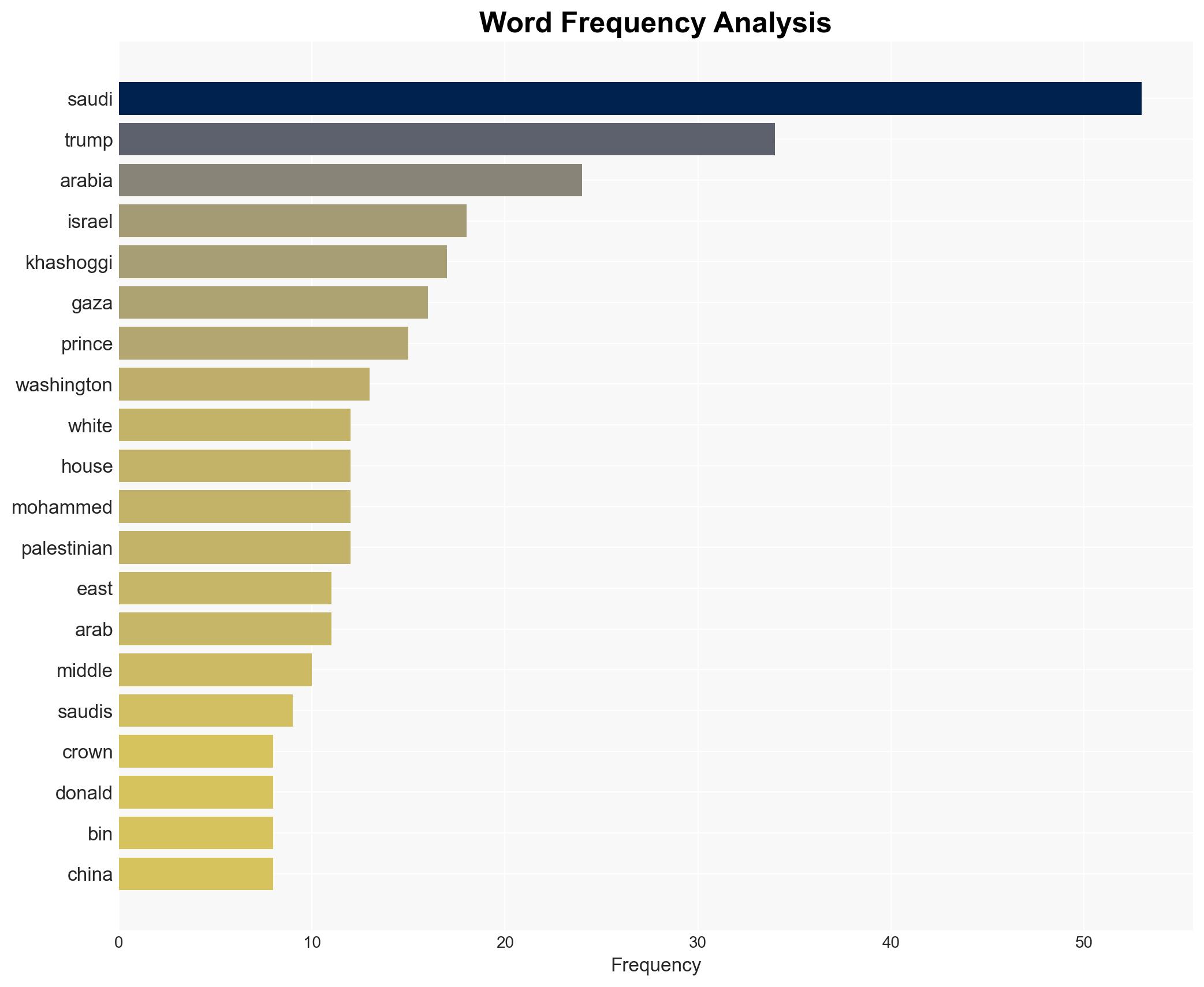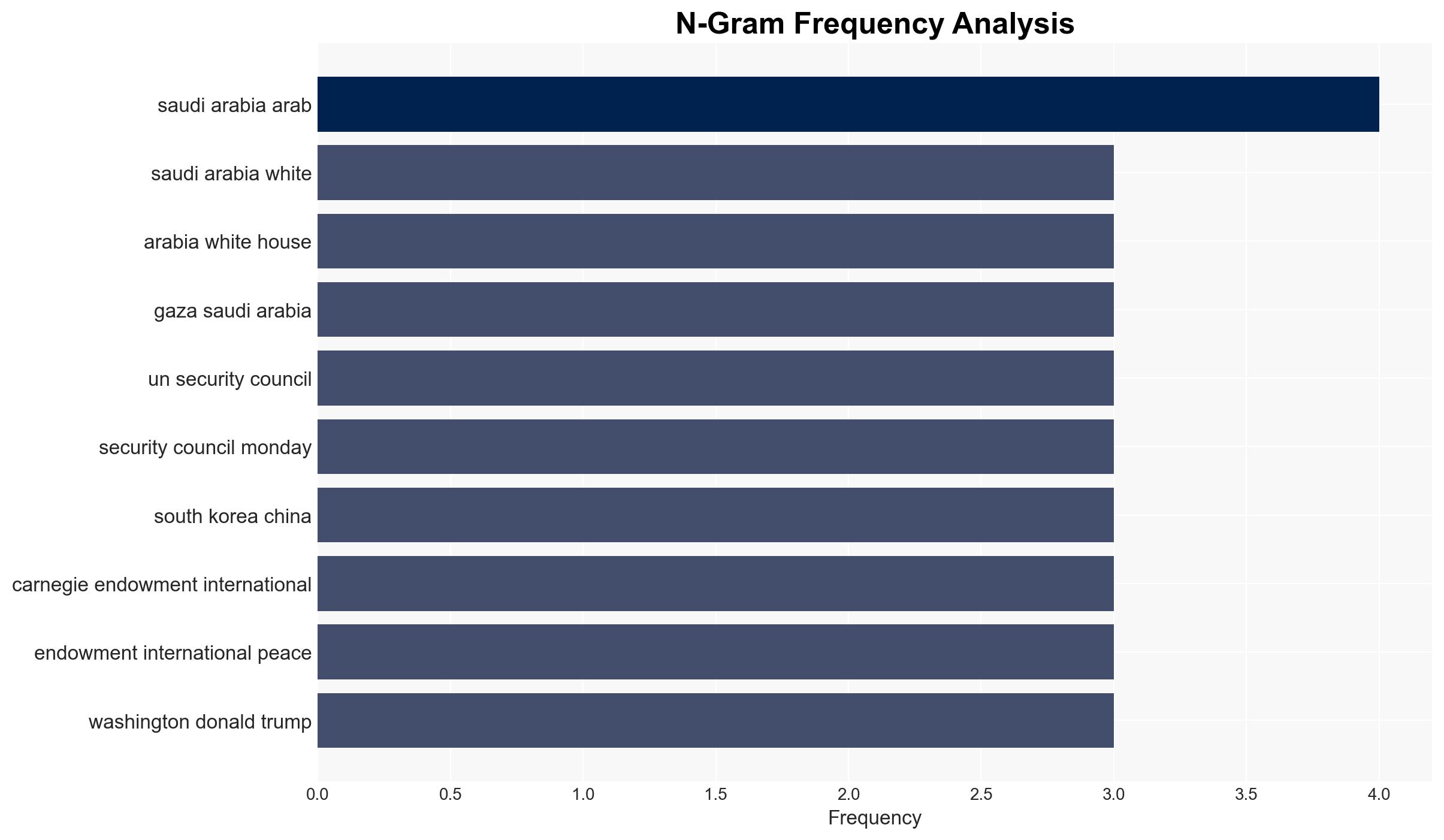Saudi crown prince to get warm embrace from Trump US business in Washington – ABC News
Published on: 2025-11-18
AI-powered OSINT brief from verified open sources. Automated NLP signal extraction with human verification. See our Methodology and Why WorldWideWatchers.
Intelligence Report:
1. BLUF (Bottom Line Up Front)
With moderate confidence, the most supported hypothesis is that the U.S. administration’s engagement with Saudi Crown Prince Mohammed bin Salman (MBS) is primarily driven by strategic interests in Middle Eastern stability and economic opportunities, despite the reputational risks associated with the Khashoggi incident. Recommended action includes maintaining diplomatic engagement while leveraging economic and security cooperation to influence Saudi policies positively.
2. Competing Hypotheses
Hypothesis 1: The U.S. administration’s warm reception of MBS is primarily motivated by economic interests, including arms sales and investment opportunities, overshadowing human rights concerns.
Hypothesis 2: The engagement is driven by a strategic imperative to stabilize the Middle East, using Saudi Arabia’s influence to further U.S. geopolitical goals, such as countering Iran and expanding the Abraham Accords.
Hypothesis 2 is more likely due to the broader geopolitical context and the emphasis on regional stability and alliances, despite economic interests playing a significant role.
3. Key Assumptions and Red Flags
Assumptions: The U.S. believes Saudi cooperation is essential for Middle Eastern stability. MBS’s denial of involvement in Khashoggi’s murder is accepted at face value for diplomatic purposes.
Red Flags: Potential underestimation of backlash from human rights groups and possible miscalculation of Saudi Arabia’s commitment to U.S. strategic goals.
4. Implications and Strategic Risks
Engagement with MBS could lead to increased regional stability if Saudi Arabia aligns with U.S. goals, but it risks reputational damage and potential domestic backlash. There is also a risk of alienating allies concerned with human rights, potentially complicating broader diplomatic efforts.
5. Recommendations and Outlook
- Continue diplomatic engagement with Saudi Arabia, emphasizing human rights improvements as part of broader cooperation.
- Monitor Saudi commitments to regional stability and adjust U.S. support accordingly.
- Best-case scenario: Strengthened U.S.-Saudi relations lead to enhanced regional stability and economic growth.
- Worst-case scenario: Reputational damage and strained alliances due to perceived U.S. complicity in human rights abuses.
- Most-likely scenario: Continued pragmatic engagement with Saudi Arabia, balancing economic and strategic interests with reputational management.
6. Key Individuals and Entities
Mohammed bin Salman (MBS), Donald Trump, Melania Trump, Bernard Haykel.
7. Thematic Tags
Structured Analytic Techniques Applied
- Cognitive Bias Stress Test: Expose and correct potential biases in assessments through red-teaming and structured challenge.
- Bayesian Scenario Modeling: Use probabilistic forecasting for conflict trajectories or escalation likelihood.
- Network Influence Mapping: Map relationships between state and non-state actors for impact estimation.
Explore more:
National Security Threats Briefs ·
Daily Summary ·
Support us





